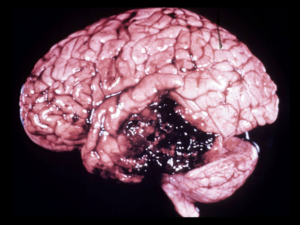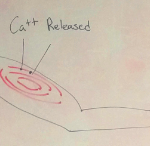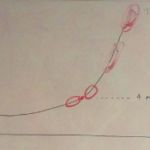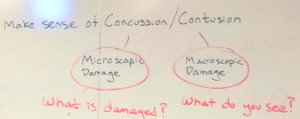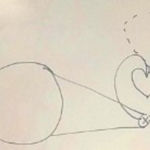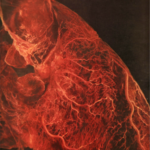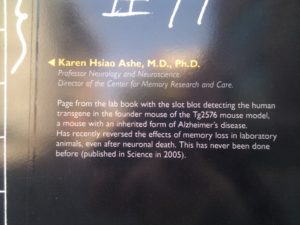Week 15. Your Brain on Collision Sports
Revisiting the Metabolic Model:
Flow of Energy, Blood, and Material.
Spatial Sense of Anatomy and Holographic Storage of Information
Lecture Overview:
Main topic is concussions, but includes a discussion I had with a client last night on lactate threshold, caffeine, and calcium.
Besides discussing caffeine and calcium’s role in triggering muscle contractions, blood flow physics and heart health, we discussed light, atomic structure, and holograms, all which are germane to this lecture because we are discussing the brain and cognition in terms of cells/neurons working ‘normally’ within the framework of a metabolic model.
This client is a retired professor and a Buddhist who is interested in exploring consciousness, spirituality, and how information may be ‘housed’ in the brain, but more specifically how it (information – memory) may be or stored in so-called non-material.
Talking points:
To understand a concussion, we first compare it to a contusion in order to visualize microscopic and macroscopic damage done to the brain.
We view brain cells, concussions, and contusions essentially the same way we viewed muscle cells within the metabolic model: A 3-D arrnagement of cells/tissue infused by capillaries where metabolism occurs: Fuel + O2 –> CO2 + H2O + Heat.
We conceive normal physiology as neurons working collectively and ‘lighting up’ dependent on your specific activity – within a crystalline-like electrical network, analogous to the Star Trek “energy forms in the sand” – that I talk about in this lecture.
The brain’s ‘normal’ physiology is dependent on blood flow and constant delivery/removal of nutrients/junk.
‘Sick’ function occurs when blood flow and connections among neurons gets disrupted, which may or may not be seen microscopically or macroscopically.
The presentation follows from the board illustration photographed below.
Everything follows from the board illustration, broken up into pieces.
My client and I discussed several points on a lactate graph and caffeine/calcium’s role in triggering muscle contractions using the two images on the left side of the board, extracted below with captions or talking points.
IMPORTANT! Tap or click the image to dismiss or recover the captions.
Why am I discussing lactate production and calcium release from the sarcoplasmic reticulum here?
It’s important to see how physical principles apply globally to all parts of the body.
We have built and applied this global way of thinking progressively throughout the semester – moving from cells of muscles, gut, blood, heart – and now to the brain.
“it isn’t common to see the information applied to other problems, such as aging and the stress-related degenerative diseases.”
Ray Peat, from Salt, energy, metabolic rate, and longevity
Thus, it’s useful to see what I’ve shown you in the past and how it may be used to work with a client on his age related concerns. For example:
Calcium triggers muscle contractions, caffeine stimulates calcium release not just in skeletal muscle but also in the heart. I explained how this mechanism applied to his heart, which confirmed both his feelings and his own research into the issue.
So next, we move to the brain. The idea I want to get across is cells/neurons work ‘normally’ or in a ‘sick’ way – metabolically – similarly to muscle cells, each in context of the framework of blood flow and delivery and removal of food stuffs and cell stuffs.
Since contusions and concussions disrupt structure and flow, comparing the two serves to teach how the brain, memory, and function are affected.
This part of the drawing is the meat of the lecture. Compare a concussion to a contusion.
I use these two images to describe the metabolic model and the similarity of cell damage or death in the heart and brain.
A most severe physical but microscopic disruption is breaking axons that connect neurons. Milder forms include widespread microsopic breakage of capillaries which disrupt blood flow.
We essentially look at the brain’s cells ‘working and lighting up’ within a network of neurons working collectively as a crystal – just like the Star Trek life form in the sand – which is dependent on blood flow, delivery and removal of nutrients/junk.
I presented the following sources/examples/authors:
-
Contusions vs Concussions by Gary E Cordingley, MD, PhD
-
Body World Pics
-
Brain Poster Session: Experimental Cerebral Ischemia – Blood Flow and Metabolism
-
Microvascular Flow Physics
-
NFL Rocks Vide
-
Junior Seau Quote
On Restoration of Memory After Neuronal Death (From Engineering Dept at University of Minnesota). I snapped this pic walking next to the engineering building at the U of M in Minneapolis. MN
After showing and drawing how dropping two stones dropped into water creates an interference pattern to explain holograms, I chatted freely on the stuff below.
Imagine R2D2 projecting Princess Leia. Insert drawing how to make a hologram here.
I’ve been talking about this ever since I read this piece “Why do mass and energy affect space-time” by Misam Abidi, PhD.
You do not have to travel faster than the speed of light (to get anywhere instantly) because you already inhabit all of the space.
All matter (E=mC2) at the speed of light has been converted to energy, therefore:
-
Mass is not infinite as mass as you classically perceive it, since it has been completely ‘reinterpreted’ – i.e. converted into energy
-
Einstein and others today fail to interpret the math by continuing to interpret mass as infinite when accelerated to the speed of light – as if it is mass as we normally think mass as a concrete thing. (the math also says it would take infinite force to accelerate the mass at the speed of light, thus the interpretation is logical at purely the math level) However, at the speed of light a mass is converted to only energy – just as the equation says – thus the math is correct and physicists interpret the math incorrectly.
-
Yes, force must be infinite to accelerate an infinite mass to the speed of light – which is impossible if mass is infinite. But mass is no longer mass as we know it at the speed of light.

